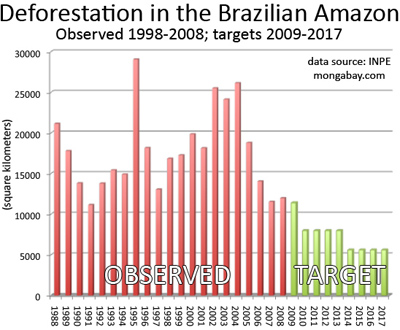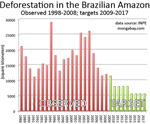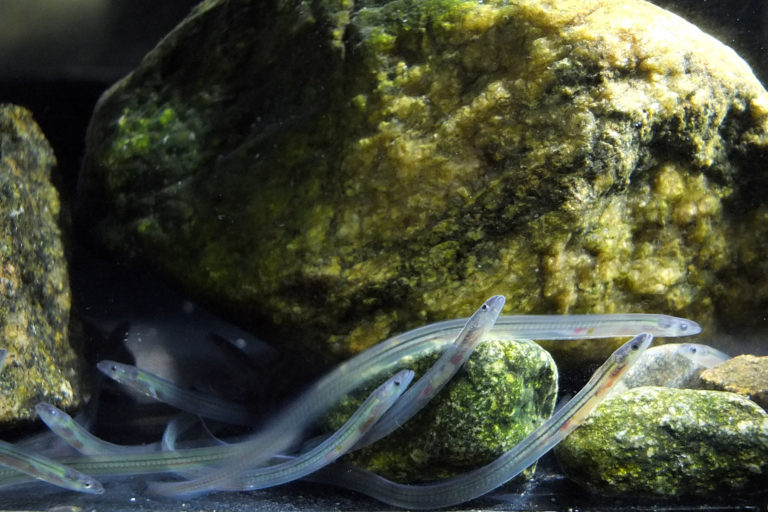Brazil will increase spending on infrastructure projects by 28 percent to in response to the global financial crisis, reports Bloomberg.
Speaking Wednesday in Brasilia, Dilma Rousseff, Brazilian President Luiz Inacio Lula da Silva’s Cabinet chief, told reporters that government and private spending on roads, hydroelectric dams and other projects under the Accelerated Growth Program for 2007-2010 “will be increased to 646 billion reais ($281 billion), from the 504 billion reais originally announced in January 2007”, according to Bloomberg.
 Click to enlarge |
“The growth program can help sustain investment levels, even if we experience an economic slowdown,” Dilma Rousseff, Lula’s Cabinet chief, said today in Brasilia. “We’re seeking to accelerate works and ensure the needed pace of investments to avoid the crisis.”
Much of the expansion is slated for the Amazon region where much of the country’s agricultural growth is occurring. Environmentalists have expressed concern that infrastructure improvements will promote deforestation in the ecologically-sensitive area. The Brazilian government has countered with a climate plan that aims to reduce forest loss by 70 percent by 2018.
Andre Soliani. Brazil to Raise Investment Spending to Spark Growth. Feb. 4 Bloomberg

What does slowing economy mean for rainforest conservation?
(01/26/2009)
Plunging commodity prices may offer a reprieve for the world’s beleaguered tropical forests. The global economic downturn has caused demand for many commodities to plummet. The resulting decline in the prices of timber, energy, minerals and agricultural products may do what conservationists have largely failed to achieve in recent years: slow deforestation. Fueled by surging demand from China and other emerging economies, and boosted by the convergence of food and energy markets in response to American and European incentives for biofuels, the worldwide commodity boom over the past few years helped trigger a land rush that precipitated the conversion of natural forests for farms, plantations, and ranches. At the same time, high prices for metals, fossil fuels, and other industrial resources drove a global search for exploitable reserves, many of which lie in tropical forest countries. Now that the bonanza is unwinding, with prices for everything from palm oil to bauxite to crude oil cratering, the incentives to clear forests are retreating. Developers large and small are abandoning projects and forgoing planned expansion around the world.

Lula pledges big cuts in Amazon deforestation — after he leaves office
(12/12/2008)
Last week Brazil unveiled plans to cut deforestation substantially from a 1996-2005 baseline of 19,533 squaure kilometers per year. The announcement met a mixed response from conservationists. Some applauded the decision to set hard targets for reducing deforestation, others say the targets were too low and that the country should aim for zero net deforestation by 2015. Nevertheless as more details have emerged, it becomes clear that the onus for reining in deforestation falls on Brazilian President Luiz Inacio Lula da Silva’s successor.
Agricultural firms cut incentives for Amazon deforestation
(12/02/2008)
As grain prices plummet and concerns over cash mount, agricultural giants are cutting loans to Brazilian farmers, reports the Wall Street Journal. Tighter farm credit may be contributing to a recent slowing in deforestation in the Brazilian Amazon, where agriculture is an increasingly important driver of forest clearing.
Future threats to the Amazon rainforest
(07/31/2008)
Between June 2000 and June 2008, more than 150,000 square kilometers of rainforest were cleared in the Brazilian Amazon. While deforestation rates have slowed since 2004, forest loss is expected to continue for the foreseeable future. This is a look at past, current and potential future drivers of deforestation in the Brazilian Amazon.














